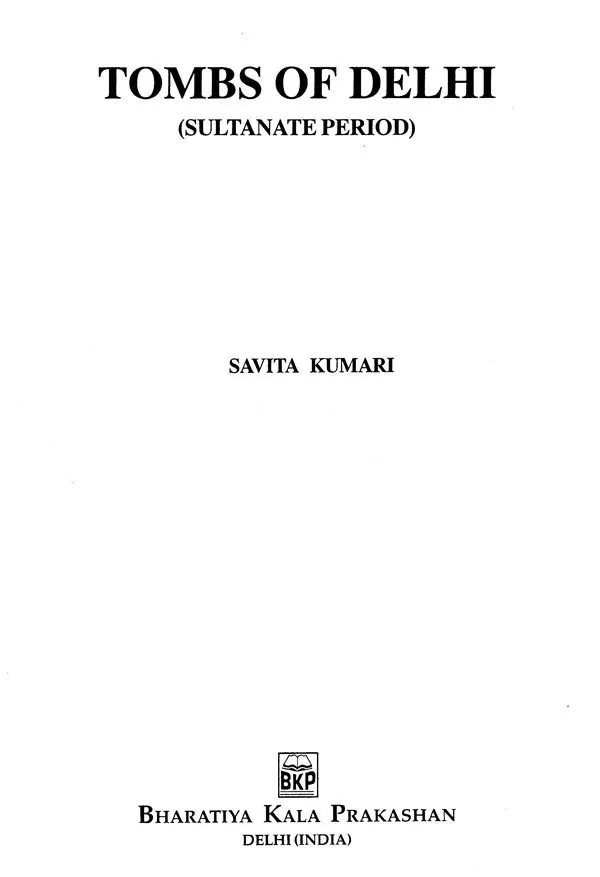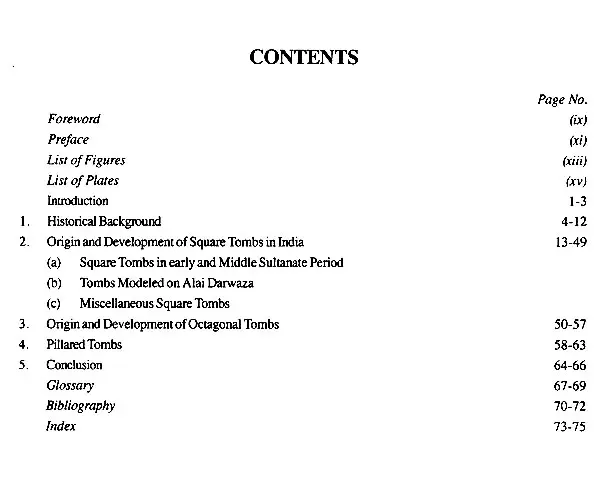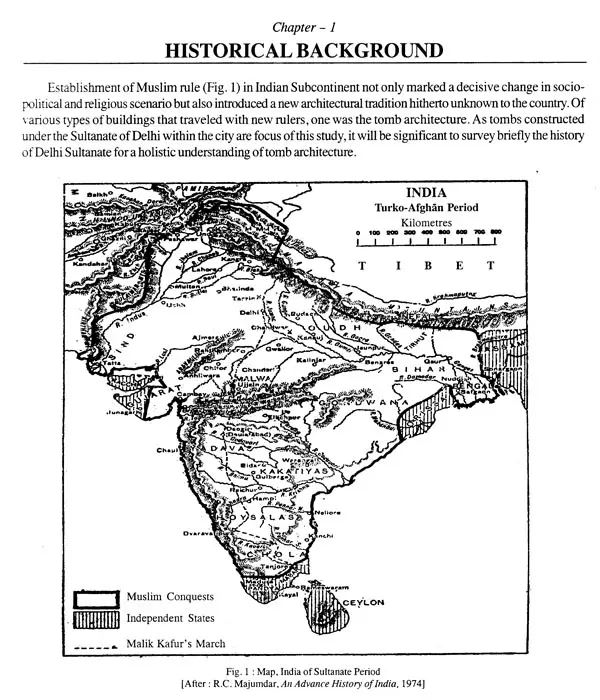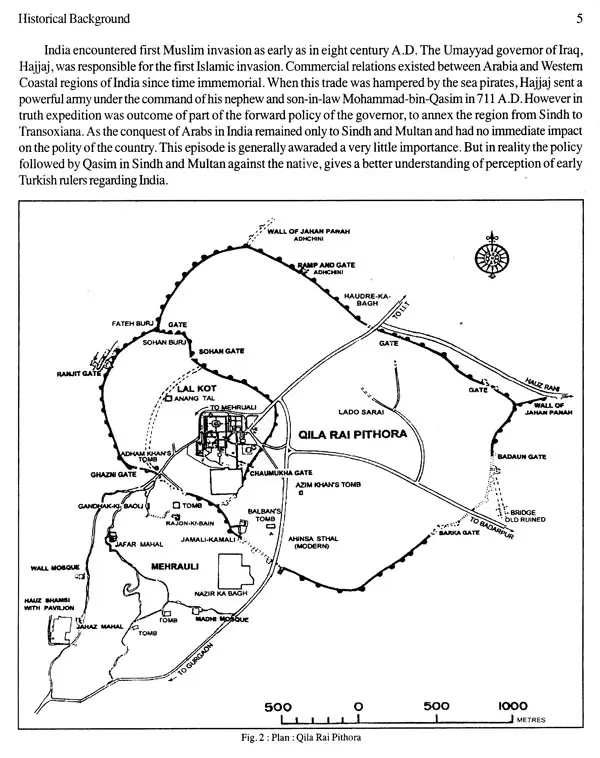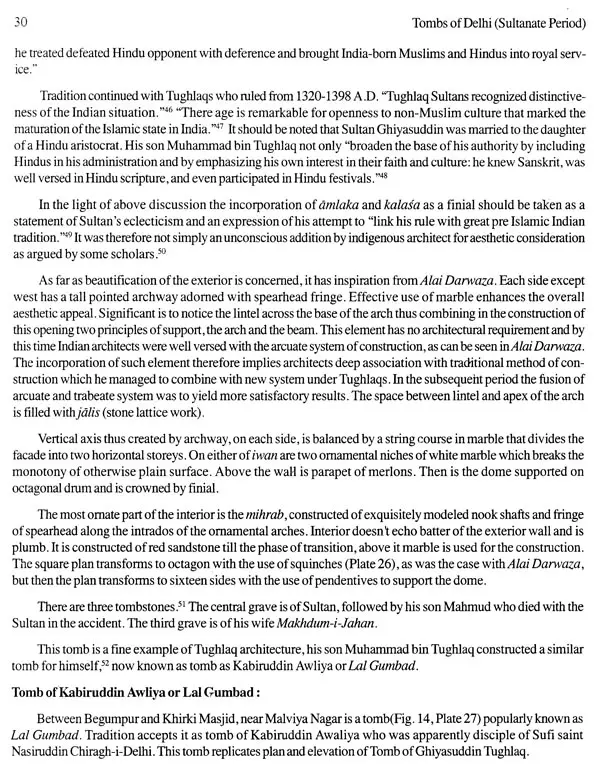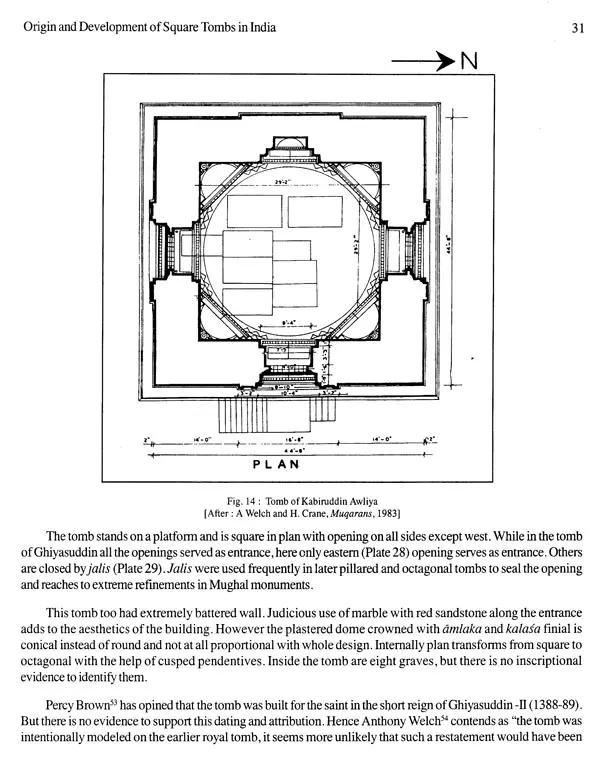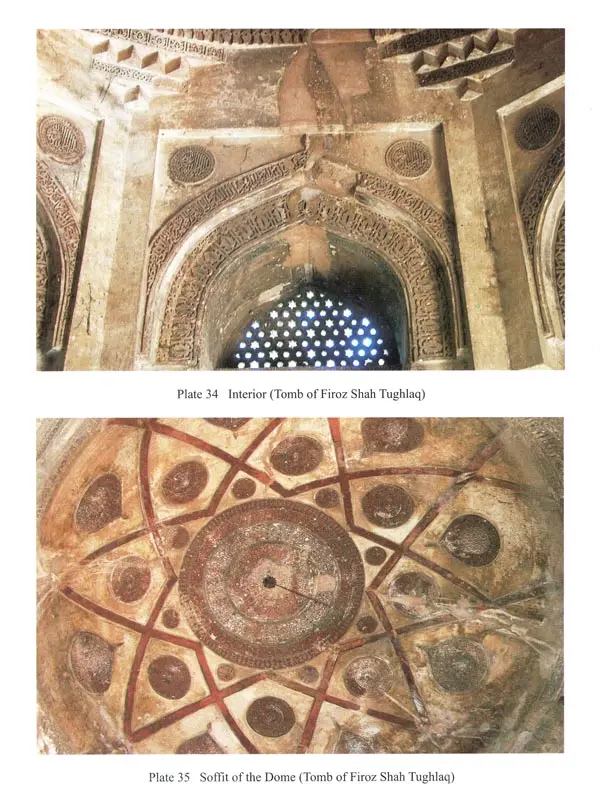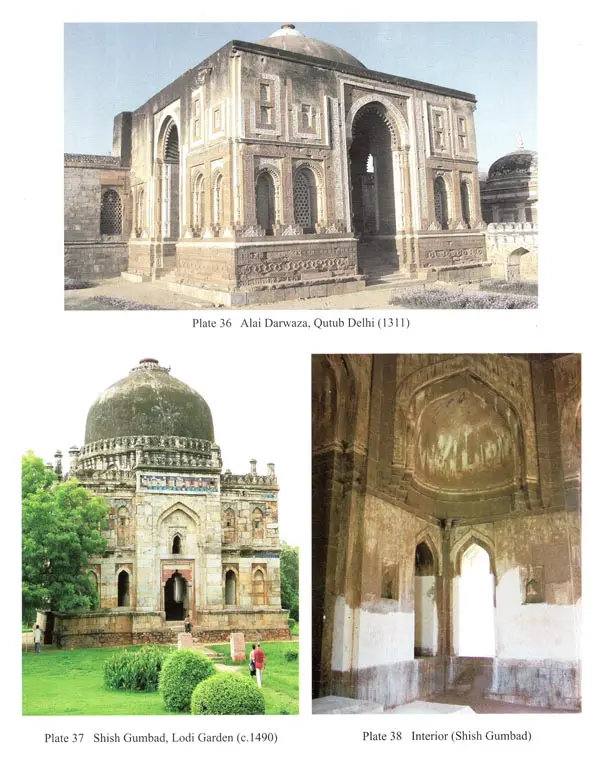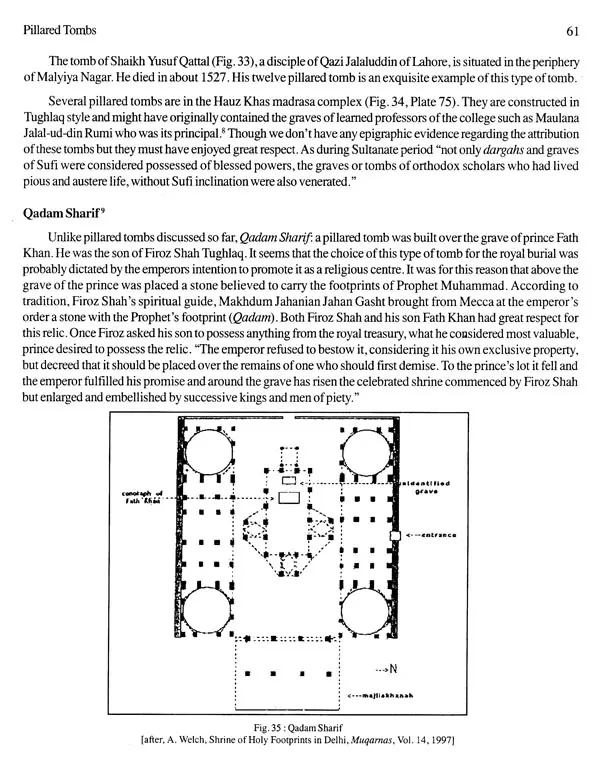
Tombs of Delhi (Sultanate Period)
Book Specification
| Item Code: | UAO039 |
| Author: | Savita Kumari |
| Publisher: | Bharatiya Kala Prakashan |
| Language: | English |
| Edition: | 2006 |
| ISBN: | 9788180901133 |
| Pages: | 102 (Throughout Color and B/w Illustrations) |
| Cover: | HARDCOVER |
| Other Details | 11.00 X 9.00 inch |
| Weight | 670 gm |
Book Description
Tomb buildings are meant to commemorate dead. Their abundance in and around Delhi always surprised me and provoked me to enquire into their history and development My quest resolved in present work titled "Tombs of Delhi (Sultanate Period)" which I submitted earlier to the National Museum Institute (NMI) of History of Art. Conservation and Museology, New Delhi, in the partial fulfillment of the requirement of M.A in History of Art.
Initially when I undertook the research expected availability of written material. So far, however, no monograph on the subject is available. In the present book my intention is to bring together published material pertaining to this subject for the readers. Particular sources are duly acknowledged in footnotes and bibliography and a general expression of my indebtedness and thanks are given here to the many authors whose writing has been so freely called upon.
Text of this book tries to analyse the relationship between tomb architecture and contemporary conditions, through a closer reading of their type, location, epigraphic programmes and decoration. I observed there was a sharp shift in the nature of tomb buildings from the early and middle Sultanate periods to the late Sultanate period due to changing socio-political considerations. My direct experience with the monuments allowed me to incorporate some fresh analysis on the subject which I hope will stimulate further research and discussion.
As befits the subject special care has been taken to illustrate the book as fully and effectively as possible. In this context, I wish to express my thanks to Archaeological Survey of India for granting me permission to reproduce here plans of monuments from "Inventory of Monuments and Sites of National Importance (Vol. 1. Part 3) Delhi Circle, ASI. "I am deeply indebted to my friend Mr. Chedha Tingsanhall, Research Scholar, NMI, for taking pictures of the monuments which I could use for illustrations in this book. Some of the plans taken from other published sources are duly acknowledged in captions.
I owe a deep sense of gratitude and thanks to Dr. B.R. Mani. Director, Archaeological Survey of India for his valuable guidance to complete this book. His suggestions helped me to conceptualize my ideas. He made me available some very important references which formed backbone of this research. Without his encouragement and guidance, it would have been difficult to finish this work.
Thanks are due to Prof. Anupa Pande, Head of the Department. History of Art, NMI, for her concem and suggestions and Dr. A. Sengupta, Associate Professor, NMI for her support. I am extremely thankful to Ms. Parul Pandya Dhar, Assistant Professor, NMI for the invaluable guidance she imparted me on various aspects of Indian architecture and research methodology. The facilities provided by National Museum Institute have tremendously facilitated my work.
I am thankful to Ms. Roobina Karode, Dr. Neeru Mishra, visiting faculties, NMI and Dr. P. K. Sharma, Assistant Registrar, NMI, for their guidance on Islamic art and architecture.
The urban growth of the city of Delhi from the beginning itself composed a picture of diffusion of cultural traits in its varied monumental heritage, representative of sublime Indian ethos which were encountered by a number of depredationist forces in the course of history. The entrepreneur and plunderers who were stunned to see this grandeur and majestic sight, yielded in obeisance and intermingled soon afterwards in the Indian cultural complex.
With the growth and increase of ntualistic congregations and commemorations, the mausolea in the Islamic world had gained popularity and grandeur during and after ninth century AD. The concept of tomb building witnessed unparalleled development when it reached India in the late twelfth century with substantial demographic growth of Muslim population and aristocracy in a city like Delhi which already had a tradition of architectural merit and where the Indo-Islamic style added a new dimension in the creative genius. This has always attracted scholars and researchers and genuine visitors as well.
One such young scholar is Ms. Savita Kumari, who submitted her dissertation in the National Museum Institute of History of Art. Conservation and Museology in the partial fulfilment of the requirement of the degree of M.A. in History of Art under my guidance in June 2005. The topic was selected on a Typological Study of the Tombs in Sultanate Delhi (1192-1526 AD.) after careful consideration of interest she had taken in the architectural study of monuments of Delhi, particularly belonging to the Delhi Sultanate period.
The tombs, on the basis of their form and composition, have been categorized by her in the book in three major groups-square, octagonal and pillared ones which can further be divided into sub-categories taking into account various sources of inspirations, requirements and influences that nurtured the new tradition in Indian architecture in both time and space. Thus the buildings reflect the engineering skill of the master craftsmen in developing the system of arcuate style in combining the square plan of the building with its circular superstructure by proper arrangement of squinches and development of true-arch Different monuments in Delhi, mostly under the central protection many of which conserved by me during 1988-1995, under the Archaeological Survey of India stand as testimony to the various steps of architectural growth, reaching to its climax with the incorporation of indigenous techniques and embellishments through traditional elements blending with the new trends in excellent manner. The outcome of such typological study of Tomb architecture tracing the developmental stages and finally reaching to culmination of stylistic preferences and rejections as visible in architecture of the following Mughal period had prompted the authoress to publish the analytical monograph which may be useful to both the researchers as well as general readers.
Elaborate funerary rituals were discouraged. Instead the corpse was to be borne quickly to the grave as prophet had expressed that "it was good for the righteous to arrive soon at happiness." There existed ancient Islamic custom of throwing earth into the grave while coating the Quran. Sura XX. 55 "From it we created you and into it we shall return you, and from it raise you a second time." The grave itself was to be leveled with the ground and no structure of any kind was to mark it. This leveling of tombs symbolized the equality of all believers in death as in life.
The question arises how then tomb architecture became so central to Islam. Thomas Leisten' mentions "a special problem the Ulemas had to deal with and the one that probably weakened the enforcement of the prohi bition against funerary building was posed by the bayt, the simple Middle Easter one room house commonly used as a funerary structure On the one hand, the bayt belonged among the structure banned by the hadith on the other Islamic theology had to cope with the fact that the prophet had died and had been buried in one. He had been entered in Aisha's Bayt-which together with other buyut and the court wall formed the dar of Muhammad in Madina". Thus incidentally were inaugurated the customs of burial in Mosques.
Initially Prophet Muhammad's desire of not marking his grave with special distinction was obeyed. However, within about some seventy years of his death his tomb, newly embellished, occupied a much venerated position in the magnificent mosque of the Prophet built by Umayyad Caliph al-Walid-I. Whatever the views of the strictly orthodox, the austerity of early Islam had been set aside decisively for the places of burial. The incident should not been taken to mean that mausolea immediately begun to spring up throughout the Islamic world. It was only in and after late 9 century the concept enjoyed popularity.
It is significant to mention that earlier mausolea were modest in scale because their prime purpose was not to house a congregation but to commemorate a person. Minor burial practice occurred. Book's Contents and Sample Pages
